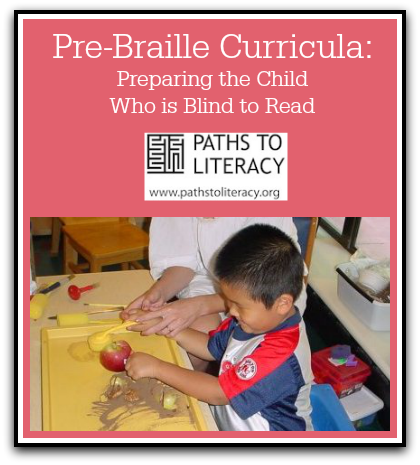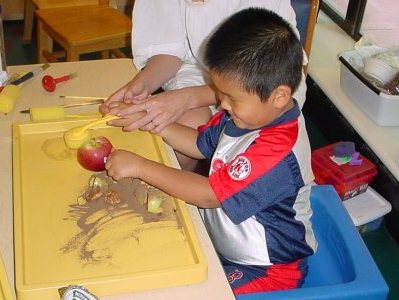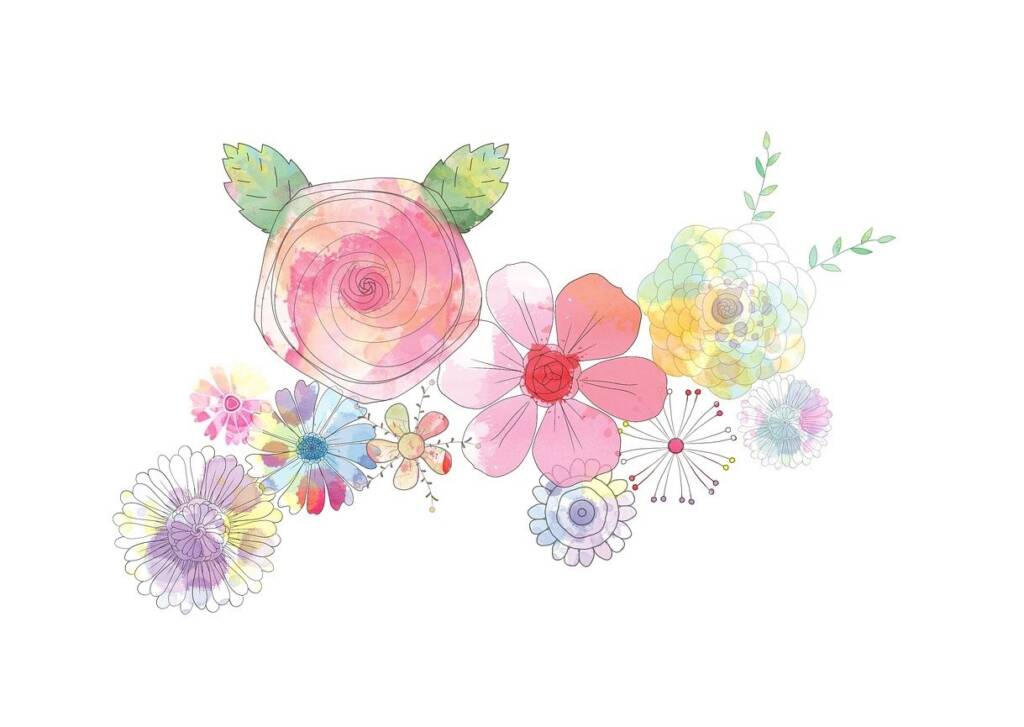Pre-Braille Curricula: Preparing the Child Who is Blind to Read
By Cindy Reed-Brown, M. Ed. and Peggy Palmer, M.A., Preschool Education Consultants
Board of Education and Services for the Blind, Windsor, Connecticut
The goal of this article is to share aspects of the pre-braille curricula that we have found helpful for families who want to support their child’s pre-literacy skills. This multi-sensory approach to reading readiness helps to build concept development, motor skills development, auditory and tactual discrimination skills. Most importantly, these strategies can help you help your child develop a love of reading.
What are some of the concepts a child needs in order to learn how to read?
- Body and Space Awareness: body part awareness, simple concepts of up/down, over/ under, top/bottom, front/back, left/ right and near/far.
- Identify Objects: labeling, concepts of same/different, big/little, wide/narrow, thick/ thin, hard/soft, empty/full, open/closed, heavy/light, few/many
- Time Awareness: yesterday, today, tomorrow, earlier/ late
- Braille “bumps” have meaning: they can identify, label, name and tell a story
What are the some of the motor skills a child needs in order to learn how to read?
- Upper body development: shoulder, arm, hand, and finger strength
- Hand Strength: reaching, grasping, releasing, and manipulating a variety of toys and materials
- Using hands together: coordinated together, hands doing different things at the same time
What are some of the tactual and auditory skills a child needs in order to learn how to read?
- Sound Identification: what object is making that sound?
- Sound matching, identification of tones: loud/soft, high/ low
- Identify the direction from which a sound comes
- Awareness of touch: naming textures, texture matching, hard/soft, rough/smooth
- Identify Shapes: circle, square, triangle, rectangle
How can we instill a love of reading in a child?
- Talk and write about every day experiences: create your own books
- Read with your child: use books with real objects, books with tactile pictures, books with a variety of textures, books that can be acted out, books on tape, your own recorded books
- Have braille available for incidental contact: Favorite objects can be braille labeled, braille books and magazines available to your child in the home
- Engage the child in active participation of the story
- Create simple story boxes, story plays, tactile books
It seems truly magical when a child learns to read (and it is)! But it is the culmination of many skills that must come together first. It is our hope that some of the ideas listed above will help you and your child on the way to literacy!
Additional Resources
Alphabet Objects
By Terri Bohling
This alphabetical reference list of objects, actions, and food can be used instead of pictures for language development, alphabet books, and other instructional activities. Most of these objects are readily available and familiar to children.
AlphaBoxes
By Anne McComiskey, BEGIN Program Director, Center for the Visually Impaired, Atlanta, Georgia
The author describes a system to teach braille characters and phonetic awareness of letter sounds using a six compartment box.
Dots for Families: Ongoing Literacy for Families of Children with Visual Impairments
Content from L. Penny Rosenblum, Ph.D., University of Arizona, and Linda Reed, M.Ed., Arizona State Schools for the Deaf and the Blind Parent Outreach Program for the Visually Impaired for family members, teachers of children with visual impairments, and others interested in promoting literacy opportunities for young children with visual impairments.
Early Tactile Learning
By Jeri Cleveland and Debra Sewell, TSBVI
The authors discuss the importance of fine and gross motor development for children with visual impairments. The importance of learning based on hands-on experiences is also discussed.
Motor Activities To Encourage Pre-Braille Skills
This list from Texas School for the Blind includes ideas for improving grasp, rotary motion, finger isolation, bilateral hand use, hand & finger strength, tracking, and other skills.





